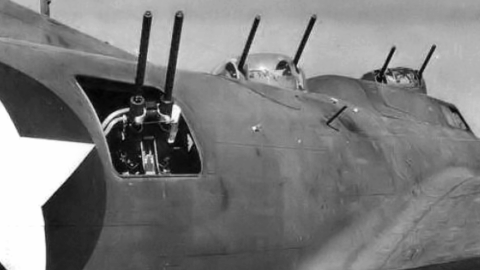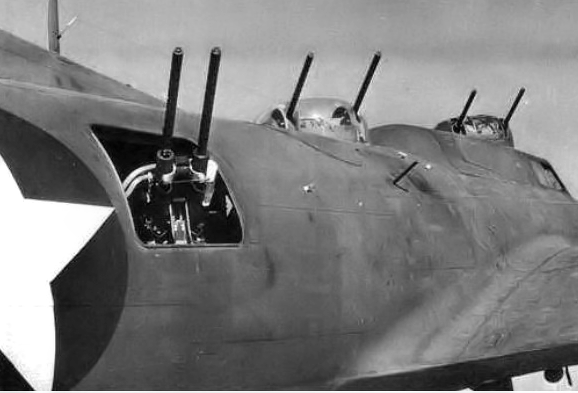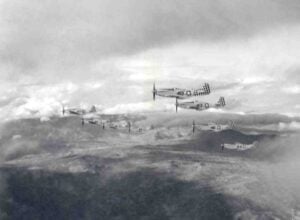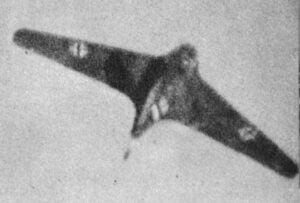How One Gunner’s “Unapproved” Idea Saved America’s B-17s in WWII

United States Army Air Forces, Public domain, via Wikimedia Commons
The Problem in the Sky
May 29, 1943, RAF Alenbury, England. Seven YB-40 Flying Fortresses sat on the hard stands, their crews completing pre-flight checks. These experimental gunships, bristling with up to sixteen .50 caliber machine guns, were America’s attempt to solve a deadly problem: bomber formations were being decimated over Germany. The concept seemed simple—extra guns to protect bombers—but reality proved far more complicated. The B-17’s narrow fuselage forced two waist gunners to stand opposite each other. At 25,000 feet, with temperatures dropping to 60° below zero, bulky flight suits, flak armor, and oxygen masks, collisions were frequent. Belts tangled, guns jammed, and oxygen lines disconnected, causing injury or death. Men were killed not by enemy bullets alone, but by the design of their own aircraft.
Statistical analysis revealed the scale of the crisis. In early 1943, a B-17 survived only about eleven missions on average, yet crews needed 25 to complete a tour. Survival odds were just 27 percent. Empty bunks lined the airfields of East Anglia, while replacements arrived faster than they could be trained. Prewar doctrine assumed self-defending bombers could survive without escorts, but German pilots had developed tactics to exploit every weakness. The waist gun positions were the most obvious flaw, a danger compounded by ice, slipstream, and high-altitude exposure.

The YB-40 Experiment
To address the escort problem while long-range fighters were still in development, the Army Air Forces introduced the YB-40 in September 1942. Standard B-17Fs were converted into flying gunships, with a second dorsal turret, twin-mounted waist guns, a Bendix chin turret, and an ammunition bay carrying 11,000 rounds. Armor was added to protect crews. The first 13 YB-40s arrived at Alenbury in May 1943. During training, the modifications revealed a key issue: doubling the firepower worsened the cramped waist positions. Gunners collided repeatedly, fouling their equipment and unable to defend the formation effectively.
The YB-40s’ first combat mission on May 29, targeting submarine pens at St. Nazaire, France, confirmed these problems. They struggled to keep up with the bombers after releasing their loads. On June 22, during a raid on a synthetic rubber plant in Germany, a YB-40 was lost because its waist gunners could not provide effective fire. After-action reports were passed to Boeing, Douglas, and Lockheed-Vega, prompting rapid analysis and experimentation.
The “Unapproved” Solution
The solution emerged in its simplicity: stagger the waist gun windows. The left window was moved forward, the right window moved back by roughly three feet. Each gunner now had a clear operating zone, eliminating collisions and ammunition jams. Minimal structural changes created maximum improvement in combat effectiveness. Initial testing in July 1943 showed dramatic results: gunners could track fighters smoothly and engage without interference. Enclosed plexiglass windows with rotating mounts further protected crews from wind and cold.
The modification was quickly incorporated into late-production B-17Fs and all B-17Gs. The Bendix chin turret, redesigned tail, and enhanced fields of fire completed the package. Production plants in Seattle, Long Beach, and Burbank built thousands of modified bombers. By autumn 1943, the changes proved their worth. B-17Gs achieved higher fighter kills and suffered fewer losses than older models, even in missions facing intense German opposition. Losses in later operations, including massive raids in 1944 and 1945, were manageable, and crews routinely completed longer tours.

Impact on the War
The staggered waist windows changed the dynamics of air combat. German pilots had to adapt, developing specialized weapons and tactics, which demonstrated the effectiveness of the B-17 improvements. Escort fighters could now operate more aggressively, leaving bombers to defend themselves more effectively. Postwar analysis confirmed the modifications’ value: the design saved hundreds of aircraft and thousands of trained crews, producing a return on investment that exceeded expectations.
The B-17G’s modifications influenced future aircraft design. Crew safety, workspace, and fields of fire became fundamental considerations in military aviation. Veterans consistently emphasized the difference made by simple changes like offset waist windows. Today, surviving B-17Gs display the staggered positions, a reminder of how combat experience, rapid adaptation, and practical innovation turned a vulnerable bomber into a weapon that helped secure air superiority over Europe.



















